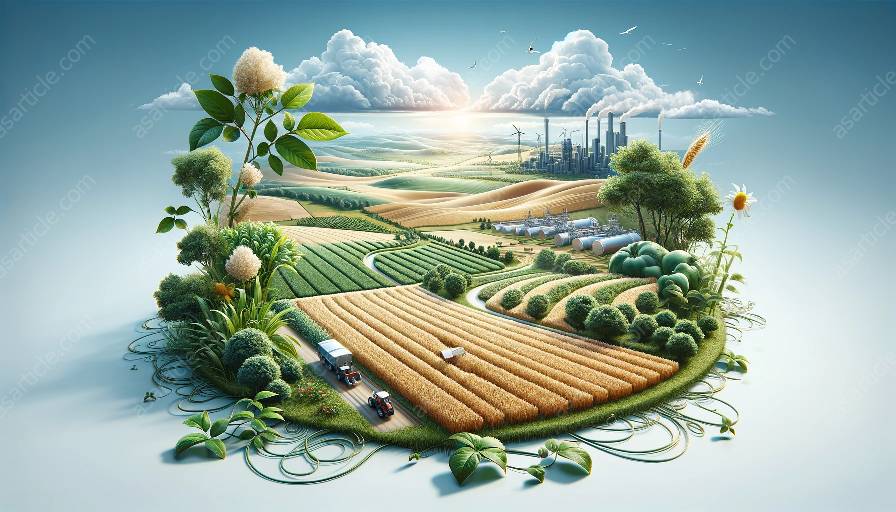Food security is a critical global issue, and agroforestry offers innovative solutions to improve agricultural productivity while promoting environmental sustainability and resilience. This article explores the interrelationship between food security and agroforestry, highlighting the potential of integrating agroforestry into agricultural systems to enhance food security.
The Importance of Food Security
Food security is essential for the well-being of current and future generations. It encompasses access to safe and nutritious food, as well as the competence to maintain a consistent and adequate supply of food. The Food and Agriculture Organization (FAO) of the United Nations asserts that food security is achieved when all people, at all times, have physical, social, and economic access to sufficient, safe, and nutritious food that meets their dietary needs and food preferences for an active and healthy life.
In an era marked by population growth, urbanization, and climate change, achieving global food security is a complex and multifaceted challenge. Sustainable agricultural practices are critical for meeting the growing demand for food while ensuring the health of ecosystems and the livelihoods of farming communities.
The Role of Agroforestry
Agroforestry, a land use management system that combines trees and shrubs with crops and/or livestock, presents a promising approach to address food security challenges. By integrating trees into agricultural landscapes, agroforestry systems provide a wide range of ecological, economic, and social benefits.
Agroforestry supports food security by enhancing the productivity and resilience of agricultural systems. The diverse plant species in agroforestry systems contribute to increased agrobiodiversity, which can lead to improved yields, reduced vulnerability to pests and diseases, and greater adaptability to climatic variations. The multifunctional nature of agroforestry landscapes allows for the simultaneous production of food, fuel, fodder, and other resources, contributing to a more diversified and sustainable livelihood for farmers.
Moreover, agroforestry contributes to the conservation and restoration of ecosystems, promoting soil health, water conservation, and biodiversity conservation. Agroforestry systems also play a key role in climate change mitigation and adaptation by sequestering carbon, reducing greenhouse gas emissions, and enhancing the resilience of agricultural landscapes to extreme weather events.
Enhancing Food Security through Agroforestry
There are several ways in which agroforestry can directly contribute to enhancing food security:
- Improved Crop Yields: Agroforestry systems can boost crop productivity by providing ecosystem services such as nutrient cycling, improved soil structure, and microclimate regulation.
- Diversification of Food Production: Agroforestry promotes the cultivation of a variety of crops and tree species, leading to a more diverse and resilient food production system that can better withstand fluctuations in environmental conditions.
- Enhanced Nutritional Quality of Food: Through the integration of nutritious trees, fruits, and nuts within agroforestry systems, the nutritional diversity and quality of the food produced can be improved, addressing malnutrition and dietary deficiencies.
- Strengthened Livelihoods: Agroforestry systems provide additional sources of income and resources for farmers, contributing to economic stability and poverty alleviation.
Challenges and Opportunities
While the integration of agroforestry into agricultural practices offers numerous benefits for food security, there are also challenges that need to be addressed. These include the need for supportive policies, access to appropriate tree species and technical knowledge, and awareness raising among farmers and other stakeholders. Additionally, scaling up agroforestry practices will require investments in research, capacity building, and market access for agroforestry products.
Despite these challenges, there are significant opportunities to advance agroforestry as a means of enhancing food security. Collaborative efforts involving governments, non-governmental organizations, research institutions, and local communities can promote the adoption of agroforestry practices and facilitate knowledge exchange and skill development among farmers. Furthermore, incorporating agroforestry principles into national and international agricultural policies can create an enabling environment for the widespread adoption of agroforestry systems.
Conclusion
The relationship between food security and agroforestry is fundamental to the sustainability of agricultural production and the conservation of natural resources. Agroforestry holds considerable potential to promote food security by enhancing the productivity, resilience, and sustainability of agricultural systems. By recognizing the value of agroforestry in addressing food security challenges, stakeholders can work towards implementing policies and practices that harness the benefits of agroforestry for sustainable food production and environmental conservation.

